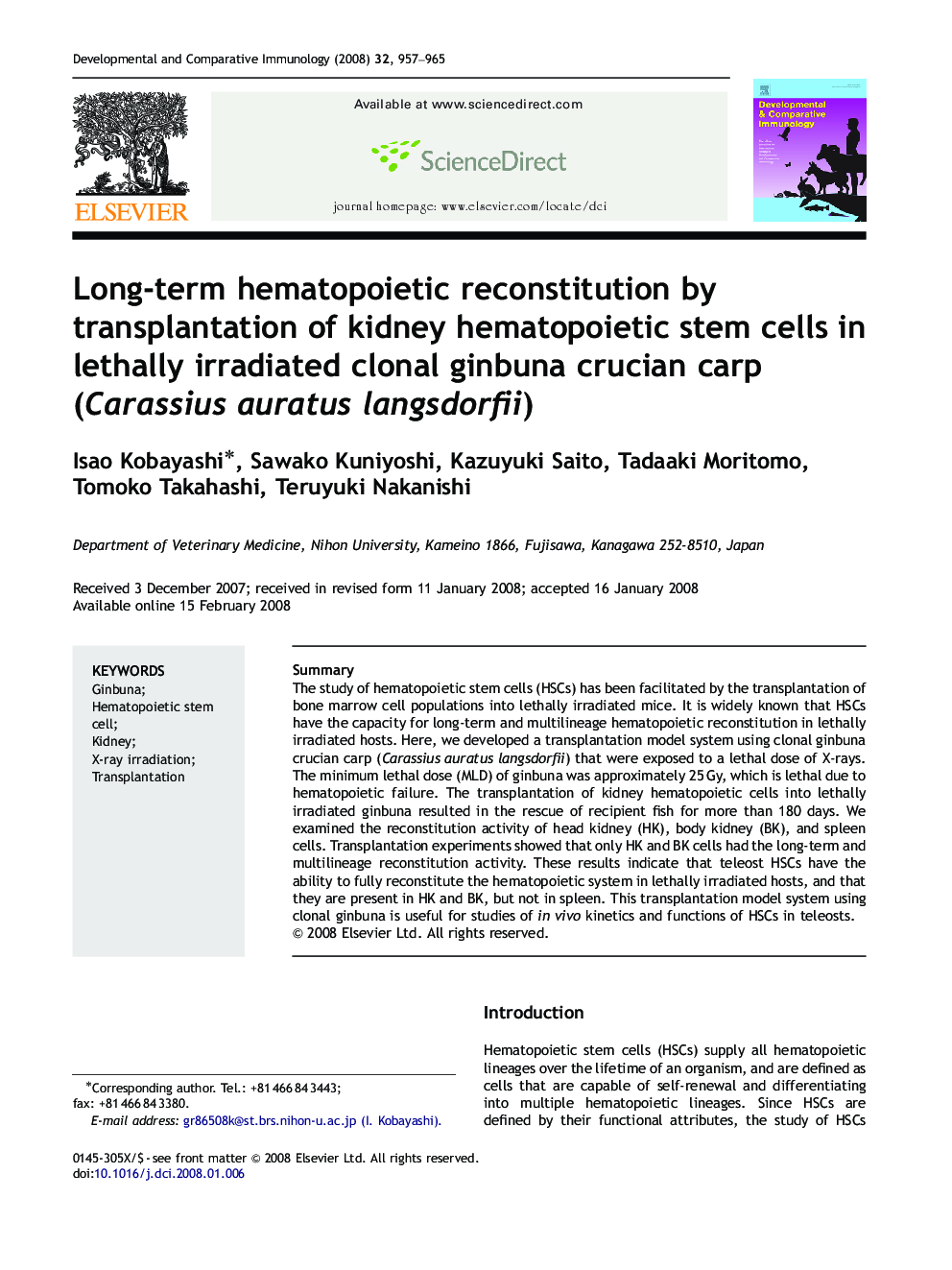| Article ID | Journal | Published Year | Pages | File Type |
|---|---|---|---|---|
| 2430039 | Developmental & Comparative Immunology | 2008 | 9 Pages |
SummaryThe study of hematopoietic stem cells (HSCs) has been facilitated by the transplantation of bone marrow cell populations into lethally irradiated mice. It is widely known that HSCs have the capacity for long-term and multilineage hematopoietic reconstitution in lethally irradiated hosts. Here, we developed a transplantation model system using clonal ginbuna crucian carp (Carassius auratus langsdorfii) that were exposed to a lethal dose of X-rays. The minimum lethal dose (MLD) of ginbuna was approximately 25 Gy, which is lethal due to hematopoietic failure. The transplantation of kidney hematopoietic cells into lethally irradiated ginbuna resulted in the rescue of recipient fish for more than 180 days. We examined the reconstitution activity of head kidney (HK), body kidney (BK), and spleen cells. Transplantation experiments showed that only HK and BK cells had the long-term and multilineage reconstitution activity. These results indicate that teleost HSCs have the ability to fully reconstitute the hematopoietic system in lethally irradiated hosts, and that they are present in HK and BK, but not in spleen. This transplantation model system using clonal ginbuna is useful for studies of in vivo kinetics and functions of HSCs in teleosts.
